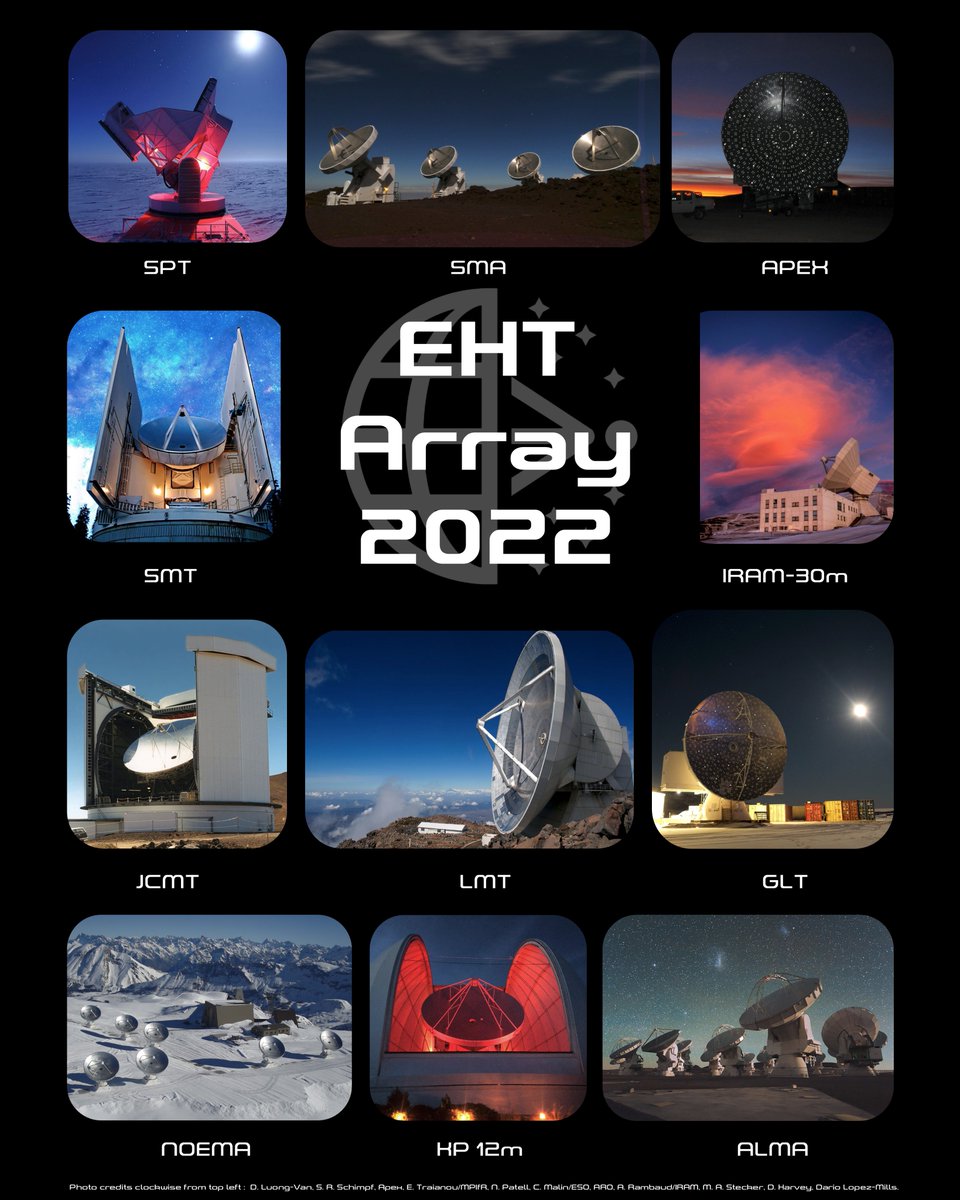Research
Our research group is focused on the study of black hole accretion and relativistic jet formation through very long baseline interferometric (VLBI) observations with mm-wave arrays, such as the Event Horizon Telescope (EHT), and orbiting antennas, such as the space VLBI mission RadioAstron. In particular our research group is playing a key role in the scientific exploitation of the Event Horizon Telescope (EHT).
EHT collaboration

On April 10th 2019 the Event Horizon Telescope (EHT) Collaboration revealed the first image of a black hole, which shows an asymmetric bright emission ring that encompasses a central depression in brightness, known as the “shadow” of the black hole, produced by the photon capture within the event horizon of the black hole. Overall, the size, circularity, asymmetry, and brightness contrast of the observed image are consistent with the shadow of a Kerr black hole as predicted by GR and provide one the strongest evidence to date of the existence of supermassive black holes in the nuclei of galaxies. With this image the EHT has opened a completely new window to study gravity, bringing into focus not only the persistent strong-field gravity features predicted by general relativity, but also the fine details of black hole accretion and relativistic jet launching.
The Event Horizon Telescope has been awarded with the 2020 Breakthrough Prize in Fundamental Physics for obtaining “the first image of a supermassive black hole, taken by means of an Earth-sized alliance of telescopes.” The EHT is an international collaboration capturing images of black holes using a virtual Earth-sized telescope. Within the contribution to the EHT, our group is mostly focussed on science data analysis of the EHT, with key contributions to the Imaging, Calibration, Scattering, Polarization, AGN, and MWL WGs. Related to this, we have participated in several important studies of M87* and Sgr A*.
Our group is also involved in is RadioAstron, an international space VLBI project. Within this project we have studied the sources 3C279 and OJ287. In addition to this, we are also involved in VLBA programs such as the MOJAVE (Monitoring Of Jets in Active galactic nuclei with VLBA Experiments) program at 15 GHz, BEAM-ME (Blazars Entering the Astrophysical Multi-Messenger Era) program at 43 GHz, to undertand blazar jet physics through high resolution full polarization imaging.